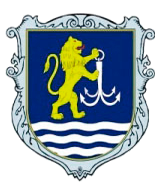KINEMATIC DESIGN AS A MEANS OF IMPROVING THE SEARCH FOR FISH AGGREGATIONS
Abstract
Introduction. The article proposes ways to improve the search for fish aggregations in river and sea industrial fishing. This improvement is based on the optimization of movements of fishing vessels when searching for fish aggregations. Optimizing the search movements of fishing vessels is combined with improving the determination of the coordinates of fish clusters by means of kinematic design. The specificity of kinematic design here is manifested in the consistency of the speeds of spatial movements of all design components. To achieve this, developed mathematical dependencies are proposed, which make it possible to calculate the coordinates of movements in the stratum of the sea depths of the wanted fish clusters. The difference between the proposed method of searching for fish clusters is the use of an auxiliary search vessel, for example, a motor boat or a boat equipped with search hydroacoustic equipment. The auxiliary search vessel moves parallel to or around the fishing vessel at a distance from it, which is determined by the effective search radius of their hydroacoustic equipment. Purpose.The main goal of the study was to develop the optimal trajectory of search movements of fishing and auxiliary vessels to ensure maximum efficiency in searching for fish aggregations with minimal fuel consumption. Conclusions.The main advantages of this method of optimization of search movements of vessels are: – reducing the negative impact on the accuracy of determining the coordinates of fish clusters of false echolocation signals reflected from the bottom of the reservoir. This is ensured by the use of kinematic design tools; – reduction of total fuel consumption for search movements of vessels in the water areas of search areas. This is ensured by the optimization of trajectories and coordination of movements of fishing and auxiliary vessels.
Downloads
References
2. Афтаназів І.С., Стоцько Р.З., Шевчук А.О, Строган О.І.,Бойко О.О. Визначення координат та параметрів руху безпілотних літальних апаратів. Системи озброєння і військова техніка. 2022. №3. (71) С. 49–59.
3. Svidrak I. G., Aftanaziv I. S., Shevchuk L. I., Strogan O. Determination of coordinates of unmanned aircrafts by means of kinematic projection Mathematical Modeling and Computing, – 2022. Vol. 9, № 2. P. 459–469. doi: https://doi.org/10.23939/mmc2022.02.459-
4. Тикунов А.И. Рыбопоисковые приборы и комплексы: Учебник. Л.: Судостроение, 1989. 288 с: ил.
5. Кудрявцев В. И. Развитие средств гидроакустической телеметрии и телеуправления в рыбохозяйственной отрасли. Всероссийский научно-исследовательский институт рыбного хозяйства и океанографии (ФГБНУ) 154 Труды ВНИРО. 2018. Т. 170. С. 153–183.
6. Кудрявцев В.И. Гидроакустика рыбохозяйственная. Учебное пособие. М.: Изд-во ВНИРО, 2018. С. 460
7. Павлов Г.И. Промысловые гидроакустические приборы / Г.И. Павлов. М.: Агропромиздат, 2017. С. 286
8. Давыдов B.C., Нгуен Т.Т., Хренов М.Ю. Методы повышения дальности распознавания рыбных скоплений на фоне донных отражений, «Радиоэлектроника известия высших учебных заведений России». Выпуск 1. 2004, С. 17–26.
9. Букатый В.М. Поиск объектов промысла. Калининград, 2000. С. 208.
10. О.П. Калиновська, В.В. Глоговський, І.Г. Пулькевич. Локаційні задачі кінематичних проекційних відображень. Пр. Льв. Міжнар. наук.- метод. конф. з геометричного моделювання, інж. та комп. граф. Л., 1994. С. 37.
11. О.П. Калиновская, В.В. Глоговский, И.Г. Пулькевич. К проблеме единой теории проекционных отображений. Прикл. геом. и инж. граф. – Вып. 57 – 1994, С. 45–50
12. Афтаназів І. С.,Шевчук Л. І.,Строган О. І., Струтинська Л. Р Вдосконалення пошуку скупчень риби засобами кінематичного проектування. Судноводіння 2022. – Вип. 33. – С. 18–31.





